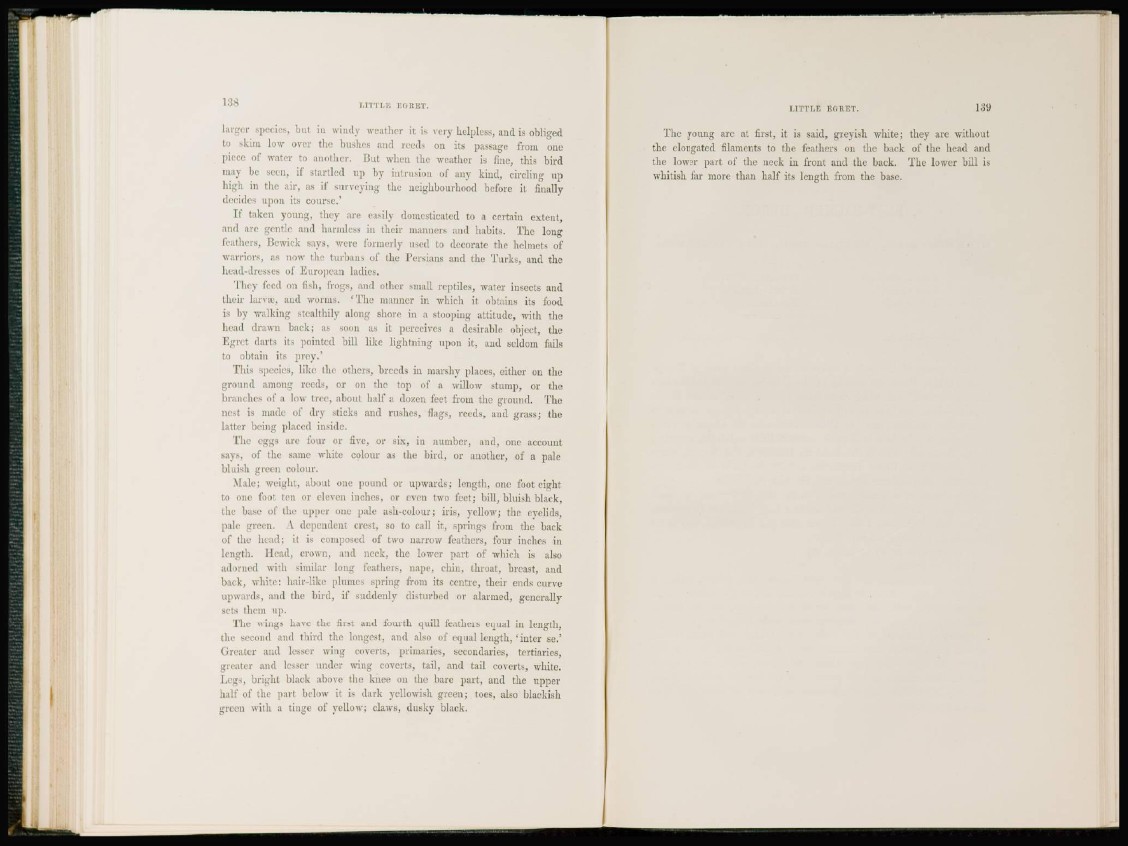
138 LITTLE ECKET.
larger species, but in windy weather it is very helpless, and is obliged
to skim low over the bushes and reeds on its passage from one
piece of water to another. But when the weather is fine, this bird
may be seen, if startled up by intrusion of any kind, circling up
high in the air, as if surveying the neighbourhood before it finally
decides upon its course*
If taken young, they are easily domesticated to a certain extent,
and are gentle and harmless in their manners and habits. The long
feathers, Bewick says, were formerly used to decorate the helmets of
warriors, as now the turbans of the Persians and the Turks, and the
head-dresses of European ladies.
They feed on fish, frogs, and other small reptiles, water insects and
their larvae, and worms. ' The manner in •which it obtains its food
is by walking stealthily along shore in a stooping attitude, with the
head drawn back; as soon as it perceives a desirable object, the
Egret darts its pointed bill like lightning upon it, and seldom fails
to obtain its prey.'
This species, like the others, breeds in marshy places, either on the
ground among reeds, or on the top of a willow stump, or the
blanches of a low tree, about half a dozen feet from the ground. The
nesl is made of dry sticks and rushes, flags, reeds, and grass; the
Latter being placed inside.
The eggs are four or five, or six, in number, and, one account
savs, of the same white colour as the bird, or another, of a pale
bluish green colour.
Male; weight, about one pound or upwards; length, one foot eight
to one foot ten or eleven inches, or even two feet; bill, bluish black,
the base of the upper one pale ash-colour; iris, yellow; the eyelids,
pale green. V dependent crest, so to call it, springs from the back
of the head; it is composed of two narrow feathers, four inches in
length. Head, crown, and neck, the lower part of which is also
adorned with similar long feathers, nape, chin, throat, breast, and
back, white: hair-like plumes spring from its centre, their ends curve
upwards, and the bird, if suddenly disturbed or alarmed, generally
sets them up.
The wings have the first and fourth quill feathers equal in length,
the second and third the longest, and also of equal l e n g t h , ' i n t e r se.'
(irenter and lesser wing coverts, primaries, secondaries, tertiaries,
greater and lesser under wing coverts, tail, and tail coverts, white.
Legs, brisrht black above the knee on the bare part, and the upper
half of the part below it is dark yellowish green; toes, also blackish
green with a tinge of yellow; claws, dusky black.
LITTLE EGRET. lot)
The young are at first, it is said, greyish white; they are without
the elongated filaments to the feathers on the back of the head and
the lower part of the neck in front and the back. The lower bill is
whitish far more than half its length from the base.